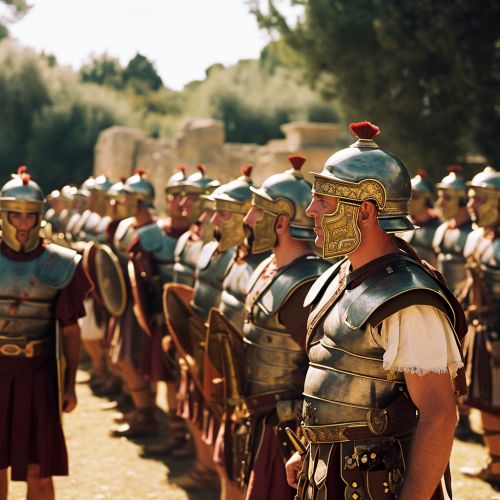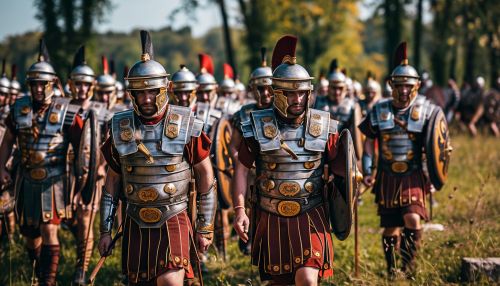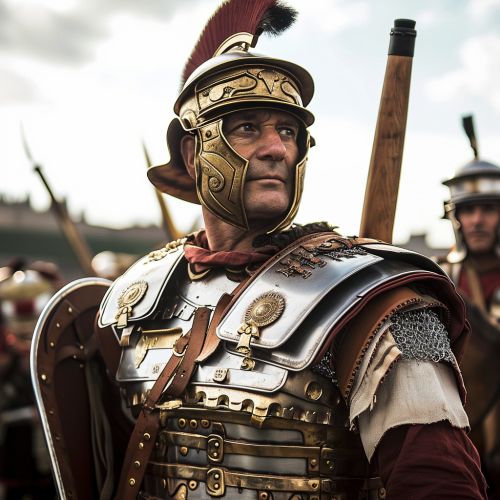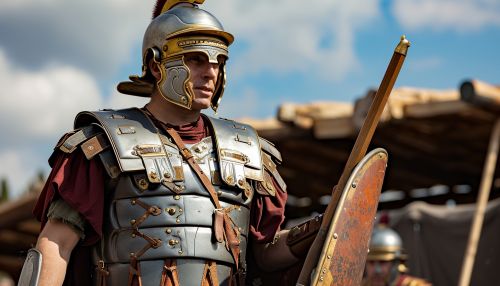Legionaries
Introduction
The legionary was the backbone of the Roman military, an elite soldier who was both a citizen and a professional warrior. Legionaries were the primary component of the Roman legions, the main fighting force of the Roman empire, which was responsible for its expansion and maintenance.
Recruitment and Training
Roman legionaries were typically recruited from the citizenry of the Roman Empire, with a particular emphasis on those from the Italian peninsula. The recruitment process was rigorous, with candidates required to meet strict physical and moral standards. Once recruited, legionaries underwent intensive training, learning the skills of combat, discipline, and survival. This training was both physical, including weapons training and marching drills, and mental, with an emphasis on discipline and obedience.


Equipment and Weapons
The equipment of a Roman legionary was designed for both effectiveness in battle and durability. The primary weapon of the legionary was the gladius, a short sword designed for thrusting. In addition to the gladius, legionaries also carried a pilum, a type of throwing spear, and a large rectangular shield known as a scutum. Legionaries also wore a type of segmented armor known as lorica segmentata, along with a bronze helmet, greaves, and sandals.
Tactics and Formations
Roman legionaries were known for their discipline and ability to maintain formation in battle. The primary formation of the legionaries was the testudo, or tortoise formation, in which the soldiers would align their shields to form a protective barrier. Other formations included the maniple, a flexible formation used for maneuvering, and the cohort, a larger formation used for large-scale battles.
Life in the Legion
Life in the Roman Legion was not easy. Legionaries were expected to march long distances, build fortifications, and engage in combat. Despite the hardships, there were also benefits to being a legionary. These included a regular salary, the opportunity for promotion, and the potential for land grants upon retirement.
The Role of the Legionary in the Roman Empire
The legionaries played a crucial role in the expansion and maintenance of the Roman Empire. Their discipline, training, and equipment made them a formidable force, and their loyalty to the Roman state was a key factor in the stability of the empire. The legionaries were also involved in civil engineering projects, such as the construction of roads and fortifications, which contributed to the infrastructure of the empire.
Conclusion
The Roman legionary was more than just a soldier. He was a symbol of the power and reach of the Roman Empire, a testament to the effectiveness of Roman military training and tactics, and a key factor in the stability and expansion of the empire. The legacy of the legionary lives on in the modern world, in the form of military tactics, engineering techniques, and the concept of the professional soldier.


